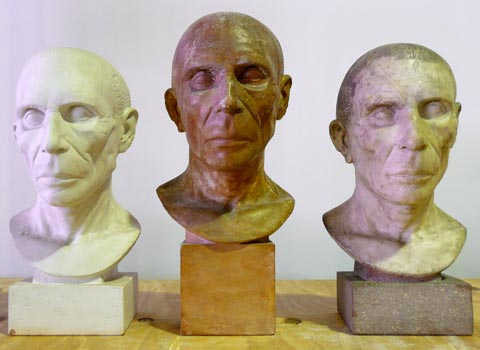Digital Sculpture Project: Casts
Plaster casts were first made of sculpture by artists in the fifteenth century. With the founding of academies of fine arts in the sixteenth century, collections of casts were formed for the purpose of artistic education. By the nineteenth century, cast collections were opened for the general public. In one place, a visitor could see the entire range of world sculpture arranged in chronological order. In the twentieth century, such collections fell out of favor. Museums such as the Metropolitan Museum in New York even deaccessioned their collections without protest from the public or scholars.
Plaster casts are useful to the Digital Sculpture Project for a number of reasons. The most important is that occasionally casts have been made of works of sculpture composed of more than one block when the blocks have been disassembled for purposes of conservation. For each block a corresponding cast was made. When the original blocks are reassembled, the resulting statue often presents occlusions that prevent 3D data capture of some of the surface. In these cases, scanning the corresponding plaster cast of the occluded block can supply missing 3D data.
Here we will present relevant material on the application of casts to our digital studies of sculpture:
- Article: “On the History of the Appraisal and Use of Plaster Casts of Ancient Sculpture,” by Adolf H. Borbein
- Article: “Fidelity and Technique of Plaster Casts,” by Andrea Felice
- Report: “Volumetric Comparison of Sculptural Casts and Originals,” by David Koller and Bernard Frischer
See also the variety of 3D digitized sculptural casts available in the “Collection” section of the Digital Sculpture Project website.
Copyright © 2009-13. Last updated: March 22, 2013.
The Digital Sculpture Project is an activity of the Virtual World Heritage Laboratory.
